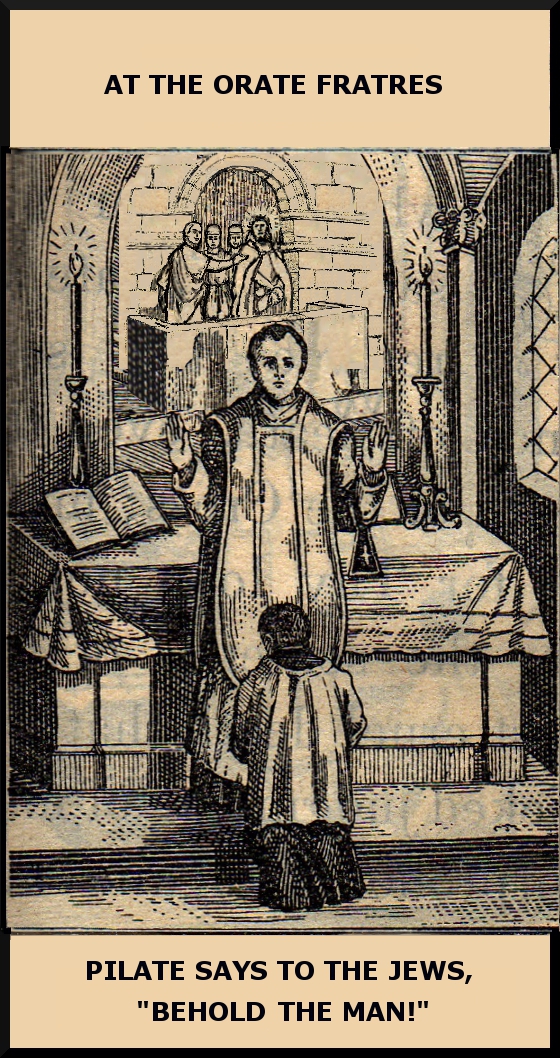 “Orate Fratres”, is the first of the seven “words” which the priest will speak clearly and audibly between now and his Communion. This corresponds to the Seven Last Words spoken by our Lord from the cross, as it is primarily during that part of the Mass – between the first “Orate” and the priest’s Communion – that His Passion will be re-presented.
“Orate Fratres”, is the first of the seven “words” which the priest will speak clearly and audibly between now and his Communion. This corresponds to the Seven Last Words spoken by our Lord from the cross, as it is primarily during that part of the Mass – between the first “Orate” and the priest’s Communion – that His Passion will be re-presented.
In addressing us as “brethren”, the priest would have us understand that being one in mind and heart, united as a family in faith, hope and charity, we must unite the sacrifice of our lives to the Sacrifice he is offering to the Most Holy Trinity. The better and more fervent our prayerful dispositions, the more agreeable will be our offering to God.
We may pray for ourselves and for each other: “Lord Jesus Christ, who for love of us, wouldst suffer to be made a spectacle before thy enemies with their cries of ‘Crucify him!’ ‘Crucify him!’, give us grace to flee from vainglory and to even bear mockery and contempt for love of Thee. Amen.”
From 1975 until 2011, in the N.O., the distinction between the ordained priesthood and the common priesthood of the laity was blurred in the Orate Fratres when the priest asked, “Pray, my brothers and sisters, that our sacrifice…” By using the word “our”, a false egalitarianism between the priest and the laity was implied. The Sacrifice properly belongs to the priest who alone has the power to mystically slay the Host and offer up the Divine Victim.
As for the laity, the victim that we offer unto God is entirely spiritual; it is ourselves, as the Church has always taught. From the Roman Catholic Daily Missal, 1962 (St. Gregory the Great): “The Mass will be a sacrifice for us to God, when we have made an offering of ourselves.”
The 2011 corrections to the N.O. brought the Orate Fratres in line with the traditional form, including the people’s response. However, one wonders if this correction will have any significant effect in rectifying the mistaken notion of so many Catholics who wrongly believe that priest and laity offer the same Sacrifice.



